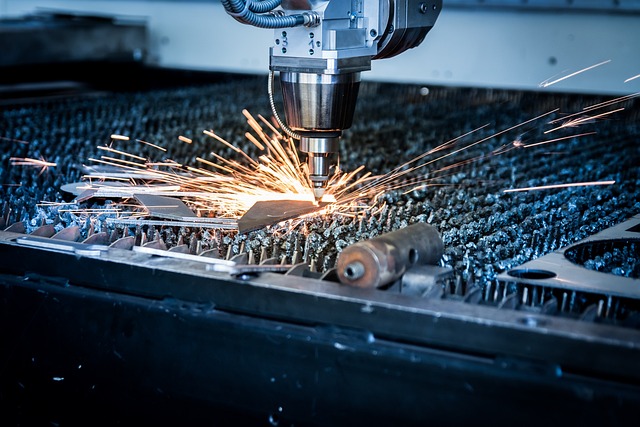The rise of digital manufacturing has transformed industries, and online laser cutting is at the forefront of this shift. Businesses and hobbyists alike can now order custom-cut materials with precision, speed, and affordability. But how exactly does it work? And more importantly, is it the right solution for your needs? This guide breaks down the ins and outs of online laser cutting, tackling common frustrations and offering solutions to streamline the process.
Why Consider Online Laser Cutting?
Traditional cutting methods are often plagued with inefficiencies. Manual cutting lacks accuracy, while CNC machining can be costly and time-consuming for smaller projects. Many people struggle with finding a balance between affordability and precision. Add to that the hassle of sourcing quality materials, and the entire process can quickly become overwhelming.
The Solution: Automation and Accessibility
Online laser cutting eliminates these barriers by providing a streamlined, accessible solution. With a few clicks, users can upload their designs, select materials, and receive professionally cut pieces without investing in expensive machinery. This process saves time, reduces waste, and ensures a level of accuracy that traditional methods struggle to achieve.
What is Laser Cutting?
Laser cutting is a process that uses a high-powered laser beam to slice through various materials with extreme precision. The laser generates intense heat, vaporizing or melting the material along a predefined path. The result? Clean edges, intricate designs, and minimal material wastage.
Types of Laser Cutting
- CO2 Laser Cutting – Ideal for materials like wood, acrylic, plastic, and fabric. This method is commonly used for decorative and branding applications.
- Fiber Laser Cutting – Best suited for metals like steel, aluminum, and brass. Fiber lasers offer exceptional speed and energy efficiency.
- Nd: YAG Laser Cutting – Used primarily for highly reflective metals and certain industrial applications.
How Does Online Laser Cutting Work?
Step 1: Upload Your Design
The process begins with uploading a design file, usually in a vector format.SVG, .DXF, or .AI. These files contain precise paths that guide the laser.
Step 2: Choose Your Material
Users can select from a range of materials, including metals, plastics, acrylics, and even paper. Each material has unique properties, and the right choice depends on the intended application.
Step 3: Customization and Specifications
Many online platforms allow users to fine-tune their orders by specifying thickness, engraving details, and finishing options. This ensures that the final product meets specific project requirements.
Step 4: Laser Cutting Process
Once the order is placed, the design is translated into machine instructions. The laser cutter follows the path outlined in the file, cutting or engraving the material with pinpoint accuracy.
Step 5: Quality Check and Shipping
After the cutting process, the pieces are inspected for accuracy and defects. Once approved, they are packaged and shipped to the customer.
Advantages of Using Online Laser Cutting Services
- Precision and Consistency
Unlike manual cutting methods, laser technology ensures accuracy down to fractions of a millimeter. This is especially crucial for industries requiring detailed components, such as electronics and jewelry.
- Cost-effective for Small Batches
Ordering custom-cut parts in small quantities is often prohibitively expensive with traditional manufacturing. Online laser cutting services eliminate the need for costly molds and dies, making them accessible for startups, artists, and DIY enthusiasts.
- Reduced Material Waste
Traditional cutting processes can lead to excessive material wastage. Laser cutting minimizes this by following precise cutting paths, ensuring the most efficient use of materials.
- Speed and Convenience
With online services, projects that would have taken days or weeks to complete manually can now be finished in hours. The entire process, from design upload to final delivery, is optimized for efficiency.
Common Challenges and How to Overcome Them
Challenge 1: Choosing the Right Material
Many users struggle with selecting the best material for their projects. Solution? Most online services provide guides or customer support to help users make informed choices.
Challenge 2: File Compatibility Issues
Design files must be in the correct format to be processed correctly. Solution? Ensure files are in vector format (.SVG, .DXF, or .AI) and follow platform-specific guidelines.
Challenge 3: Unexpected Costs
Pricing varies based on material type, thickness, and order volume. Solution? Use online price calculators to estimate costs before finalizing an order.
Conclusion
Online laser cutting is revolutionizing the way businesses and individuals approach fabrication. By offering precision, affordability, and convenience, it eliminates many of the frustrations associated with traditional cutting methods. Whether you’re a business needing custom parts or a creator bringing ideas to life, leveraging this technology can significantly streamline production. With careful planning and the right platform, anyone can take advantage of the benefits of laser cutting without the headaches of manual processes.



